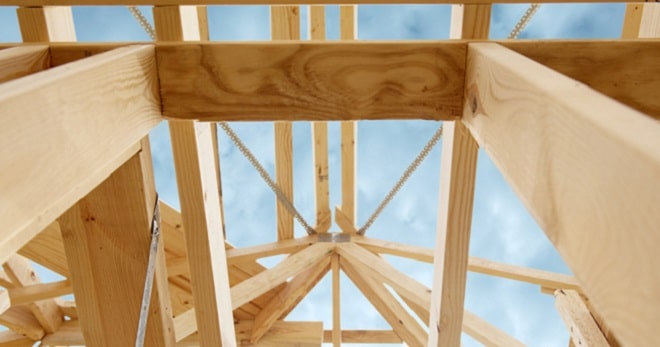The conveyancing process – What you need to know at each stage

Whether you are buying or selling a property, the conveyancing process can often be exciting and daunting at the same time. It can also be difficult to understand the process at multiple stages of the transaction. To help guide you through, we have pulled together a step-by-step guide of what you can expect during each stage of the conveyancing process.
Stage 1. Instruction
For buyers, once a property has been found, and an offer formally accepted, the next step is to instruct a solicitor or conveyancer to legally complete the purchase. Similarly, if you are selling a property, instruction takes place after you formally accept the offer. Usually, when estate agents are involved, they will help you navigate this part.
When should you instruct your solicitor?
For sellers, it may be useful to instruct solicitors when the property has been placed on the market – even before you have accepted an offer. This helps prevent delays as the solicitor will have to complete their new client onboarding process. Once you have completed your onboarding process, they will then ask you to complete various forms including the Law Society protocol forms which contains information about the property. Having these forms completed prior to finding a buyer can speed up the process of the transaction; allowing the seller’s solicitor to swiftly progress into producing the contract papers.
Stage 2. Contract Papers
For sellers, during the file opening process they will be asked to complete various forms about the property which are standard and set by the Law Society. These will form part of the ‘contract papers’.
Upon confirming instructions, it is the seller’s solicitor’s responsibility to issue these documents, which include:
- the draft contract,
- a copy of the land registry title
- and the completed law society recommended forms as part of any standard transaction.
For leasehold transactions, a copy of the lease is also supplied to the buyer’s solicitor along with the freehold title. The purpose of these is to give the buyer’s solicitor information about the property upon which they base their investigations and raise enquiries as well as commencing their standard searches.
Do I need to do a structural survey when buying a property?
As a buyer, it is highly recommended that a structural survey is carried out. The conveyancer can only assist with legal points, they are not specialists with respect to the structure of the property. It is important to note that the seller is not under any legal obligations to make the buyer aware of any defects (structural or otherwise) and the buyer should be satisfied before exchanging contracts and this is known as ‘caveat emptor’ or let the buyer beware.
Stage 3. Searches and Title investigation
Following receipt of the contract papers, buyers will be expected to make a deposit to their solicitor firms account for the purposes of ordering searches. These will be used to find out vital information about the property and the chosen searches will depend on the property, its location and specific circumstances to the transaction. The most common searches are:
- Local authority
- Environmental
- Water and drainage
- Flood risk
- Mining searches
On leasehold transactions, the buyer’s solicitor will also request a management information pack which is an additional pack (at the cost of the seller) containing additional information about the property, such as details of any major works, service charge and ground rent.
What happens when property searches have been completed?
Once the searches are returned, further enquiries may be raised based on the results. If the buyer has any specific enquiries they wish to raise, they should also let their solicitor know. It is important to remember that the conveyancer does not see the property therefore they rely on the structural survey, the title documents, the lease, sellers’ forms and search results.
If purchasing with a mortgage, and the lender wishes to instruct the buyer’s solicitor to act on their behalf as well, they will review the UK Finance Mortgage lender’s Handbook (also known as CML) or for Building Societies it is the Building Societies Association to ensure the lenders requirements are met in preparation for completion.
Stage 4. Reporting and signing contract documentation
Sellers will usually be asked to provide their assistance with relevant enquiries raised by the buyer’s side and provide replies. Once the buyer’s solicitor has received satisfactory replies, they will proceed to the reporting stage. The report will include important information to note about the property, searches and mortgage offer and enclose the documents that the solicitor has reviewed and referred to.
At this point, both buyer and seller will be provided with the documentation that they are required to sign, for example if the buyer is using mortgage finance then a mortgage deed will be sent along with the contract, transfer deed and stamp duty form. Provided that the buyer is happy with the contents of the report, once the signed documents are returned to their respective solicitors or conveyancers, both parties can prepare for exchange of contracts.
The two main legal documents for the seller to execute is the contract and transfer deed. The contract is a legally binding document which promises that a sale will take place on the agreed completion date and both parties becomes bound to sell and purchase the property. If the contract is breached, various penalties are available, mainly the loss of the deposit. The transfer deed is the formal and legal document that transfers the property from the seller and into the buyer’s name.
Stage 5. Exchange
What happens when you exchange on a property purchase or sale?
Upon receipt of the signed contracts the buyer will arrange to send their solicitor a deposit which is usually 10% of the purchase price (although a lower deposit of 5% can be agreed). Once a date for completion has been agreed and authority has been obtained, the solicitor for both parties will exchange contracts. There are three main methods by which an exchange can take place and depending on whether there is a chain, the solicitors will agree on the best method. On exchange, if there is a mortgage on the property, the seller’s solicitor will obtain a redemption statement so that they know what the balance is to pay off the mortgage. From a buyer’s perspective, the solicitor acting will submit a certificate of title (COT) to request the mortgage advance for completion.
A final completion statement will be issued to the buyer and seller – the buyer’s statement will outline the balance remaining to pay for completion and the seller’s statement will outline the amount that will be paid out and the balance due on completion.
Stage 6. Completion
What happens when you complete on a property purchase or sale?
Completion takes place when the seller’s solicitor is in receipt of the completion funds.
On this day, the balance of the purchase price, taking into account any apportionments such as service charge and ground rent (minus the deposit as this is paid on exchange), is sent to the seller’s solicitor. Upon arrival, completion is confirmed and the keys will be released which means they are available to pick up from the estate agent (or seller direct).
Stage 7. Post Completion
The final stage of the transaction involves the buyer’s solicitor paying any Stamp Duty (if applicable) registering a charge at Companies House (for company clients) and applying to the Land Registry to register the buyer as the new owner and registering the legal charge if there is a mortgage. Depending on the lease obligations, notices and deeds of covenants may also be required.
Once the solicitor has received the updated title documentation showing the buyer as the legal owner of the property, a copy will be forwarded to the buyer for their records. The seller’s solicitor will ensure the relevant fees are paid out (such as the redemption of mortgage and estate agent fees) and then the file is then closed.

Thinking of purchasing or selling a property?
Contact us now to find out how we can make the your purchase or sale go as smoothly as possible.
Our related services & support
Legal insight from our conveyancing experts
View more articles related to Property Conveyancing


















